Ring Road Day 4: Walks Through Epic Landscapes
Whenever people ask me what Iceland is like, I have a one word response: epic. I mostly mean the landscape, and it is places like the ones on this day's leg of the journey that make the word leap to mind.
I started out the day in Akureyri. I saw the main church there, which was designed by the same architect as the basalt themed tower in Reykjavik, as well as the historic catholic church and another casting of Einar Jónsson's The Outlaw.
A short ways out from the city I passed a van that was filming out the side door as the rolled by the landscape. They caught up with my soon thereafter at my first stop, Goðafoss, or Waterfall of the Gods. They were filming a promotional video about the possibility of tourism in the Icelandic winter, so of course they wanted to interview the foreigner mad enough to be doing precisely that. The video is supposed to be on the web, but I forgot the name of company making it. If you somehow manage to track it down, let me know. (While searching for it I came across this video, which covers almost exactly the same things I did that day, albeit in a slightly different order, and if it is the same people [which is plausible, looking at the video] then it was actually on the same day.) I told them that there were obvious disadvantages, such as the brief span of daylight, but that there were upsides too, such as the frozen waterfall behind us.
Goðafoss' name comes from an event just after a pivotal point in Icelandic history. In the year 1000 there was a country-wide meeting of the important landowners. They decided that it caused too much trouble to have a Christian set of laws and a set derived from the Norse religion and so wanted to have a single religion for the entire country. The choice of which of the two religions Iceland would adopt fell on the shoulders of one man, the Law-Speaker of the assembly. In those times many people could not read so instead of writing down the laws, the Law-Speaker would memorize them and tell them to the assembly. This Law-Speaker, Þorgeir, spent a day in solitary contemplation before declaring Iceland a Christian country, but allowed people to practice other religions privately. He himself had been a follower of the Norse gods On his way back to his farm on the other side of Iceland, he threw the wooden idols of his gods into these falls.
I continued to leap frog the film crew for the next few hours as we came to Mývatn lake. The whole area is pockmarked with pseudo-craters (formed by steam explosions, not magma vents) and odd rock formations.
I walked around several of the craters across paths that were hard to make out in the snow. I had to jump a partially frozen stream at one point and got slightly wet when I didn't quite make it to the far side. Thankfully I always bring lots of warm socks wherever I go.
At a nearby point lava pillars rise from the lake.
The Dimmuborgir lava field was the result of a massive lava flow where the lava hardened on the top and was supported by rock pillars where vents of water cooled the lava. Once the lava receded the pillars and pieces of the roof between them remain, leaving natural arches and otherworldly landscapes.
The lava field is said to be the haunt of the Yule Lads, mischievous little men whose descriptions have varied over the years from monsters who will eat children to pranksters to Santa Clause like figures.
Overlooking the area is the kilometer in diameter crater of Hverfjall.
Steam escaped vents in the ground around me as I drove on frozen dirt roads to a giant fissure. Inside there are hot springs, though one is now too cold and one too hot for swimming.
Near the fissures were icicles growing upward from the ground:
Past the far end of the lake there were some ponds that produced enough steam to interfere with driving down the road near it.
Over a small pass lay an even more geothermally active area with Yellowstone-like boiling mud and what looked like termite mounds converted to vents that shot out perfect lines of steam:
Not too far was a power plant where all that geothermic energy was being harnessed.
The path was trick at points, whether because of being covered with feet of ice or being hot enough to threaten to begin to melt the soles of my boots. I was nervous at points but I was following recent footprints so I felt I was probably not going to fall through the thin ground that the signs and my Lonely Planet warned about.
One crater is called "homemade Hell" because it is the result of trying to make one big bore-hole to fulfill the needs of the entire power plant. After the explosion a secondary site was used with many smaller bore holes.
The steam caught the sun's dying light magnificently.
I drove in the dark to the nearest real town, Egilsstaðir. The places I intended to stay were closed for the night were closed for the season, so I continued on over treacherously icy passes and down into a steep fjord to the little town of Seyðisfjörður. The hostel was closed, but it turned out the annex was open, and by open I mean simply left unlocked and unwatched. I called out for a while before finding the proprietor in a room upstairs. I probably could have slept there without him ever noticing, but I support the existence of hostels so paid my way. Here I was told that my timing was wrong for seeing the Northern Lights, which apparently are only common from September to November. So it goes.
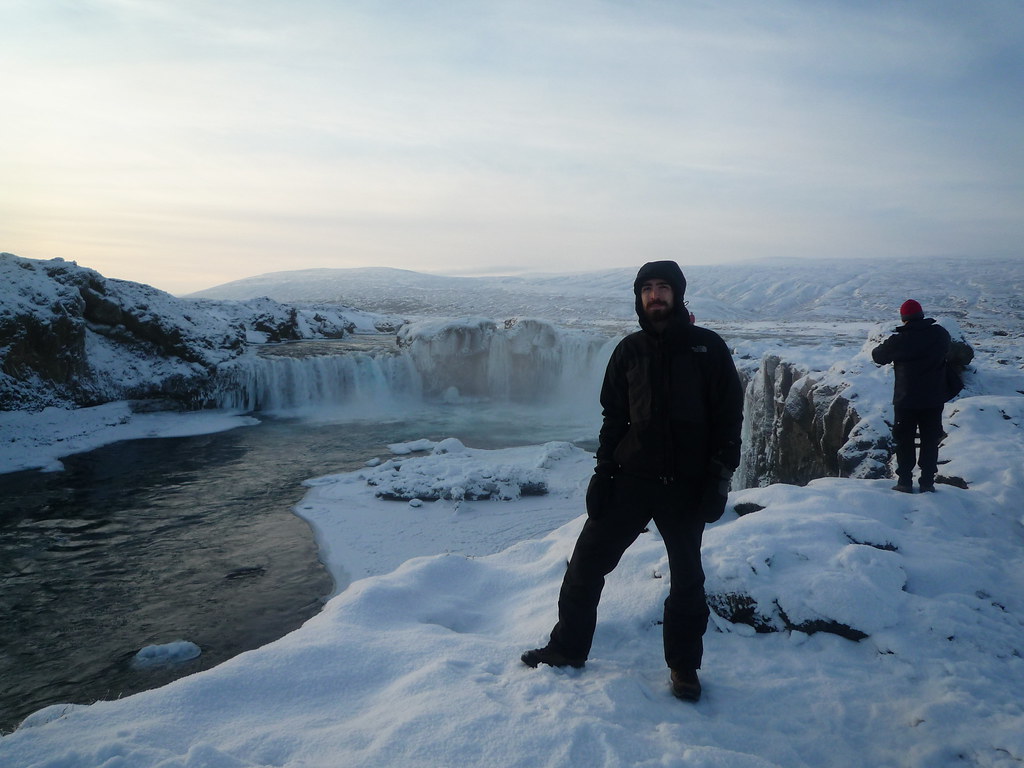


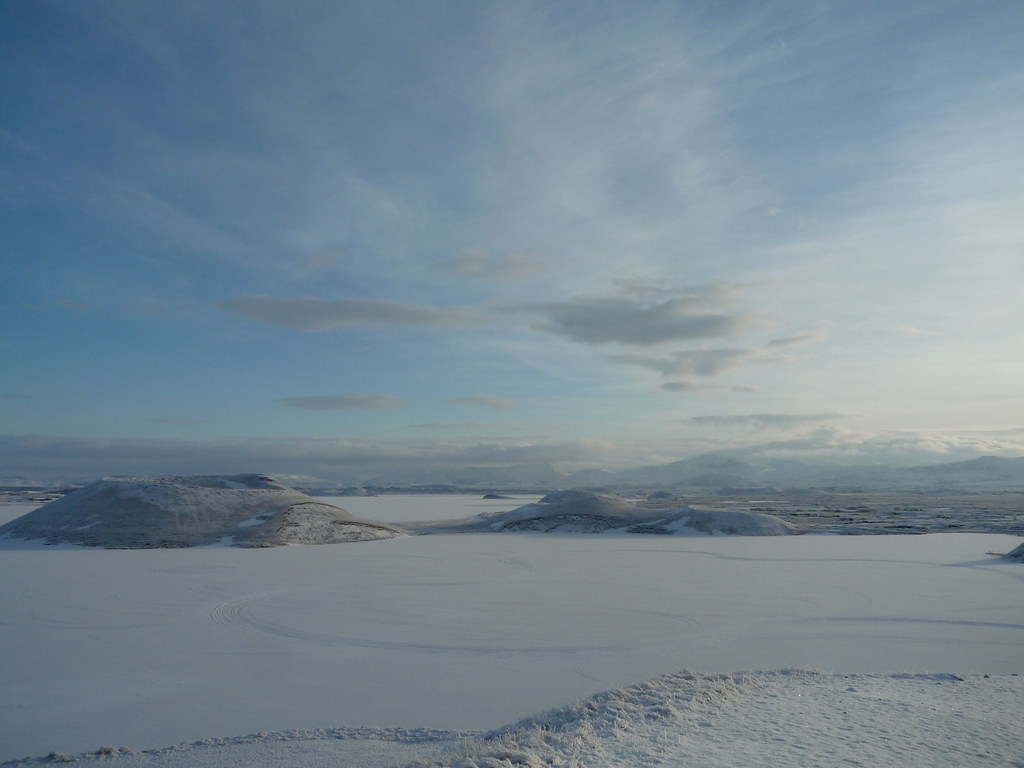
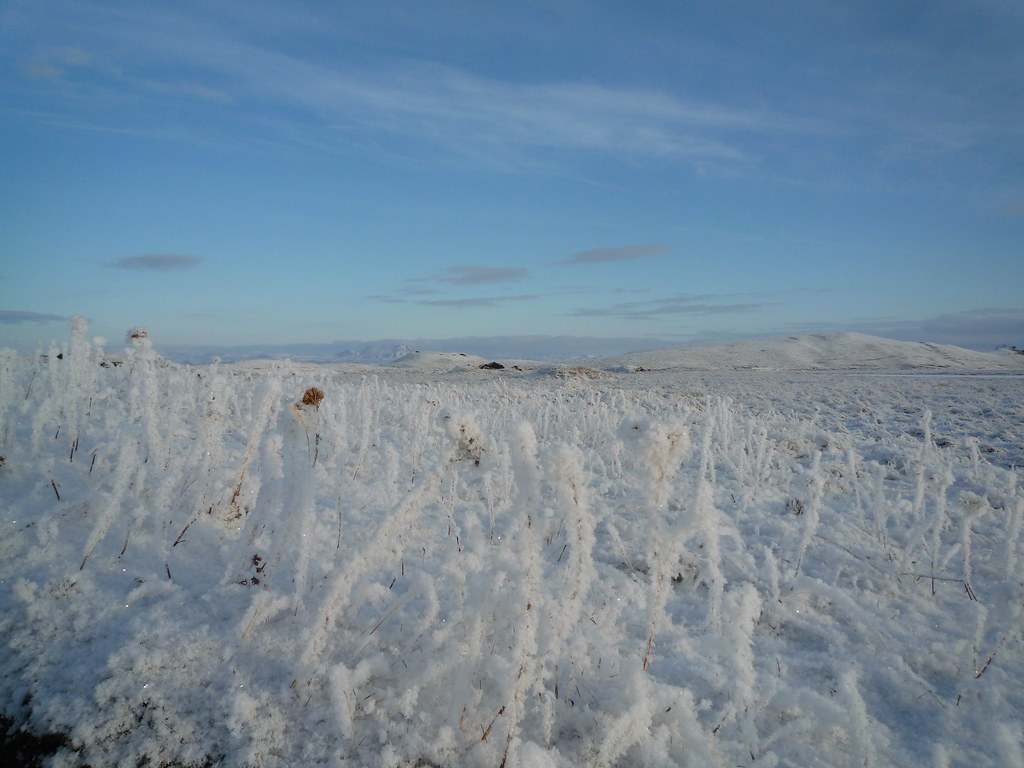
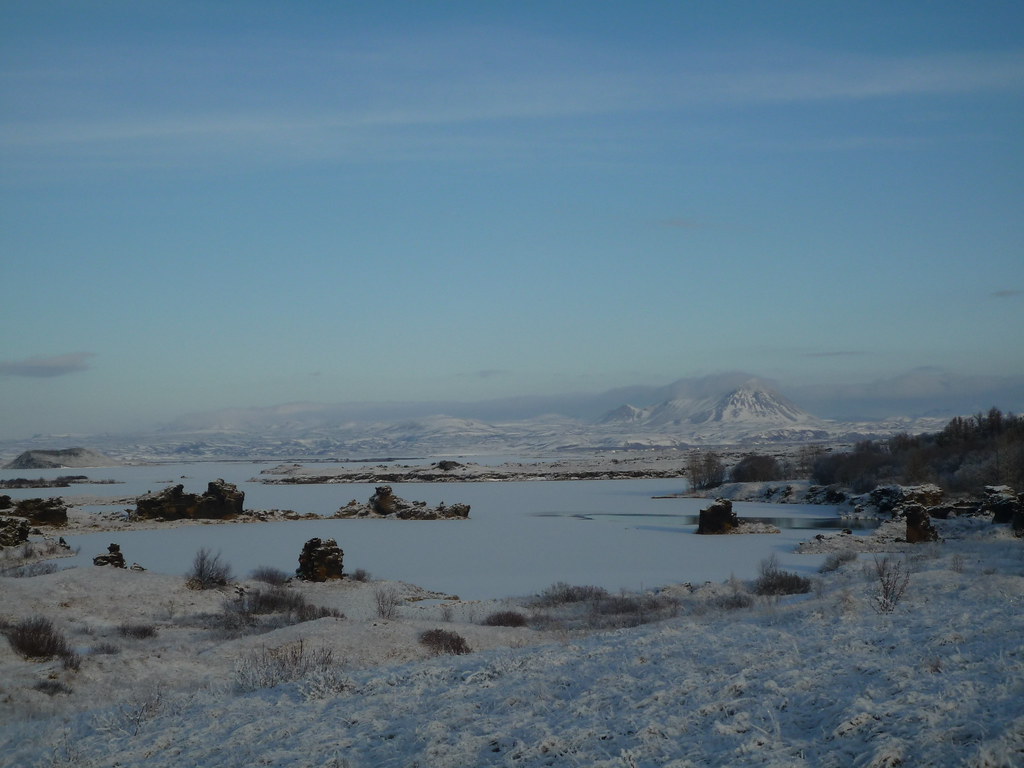
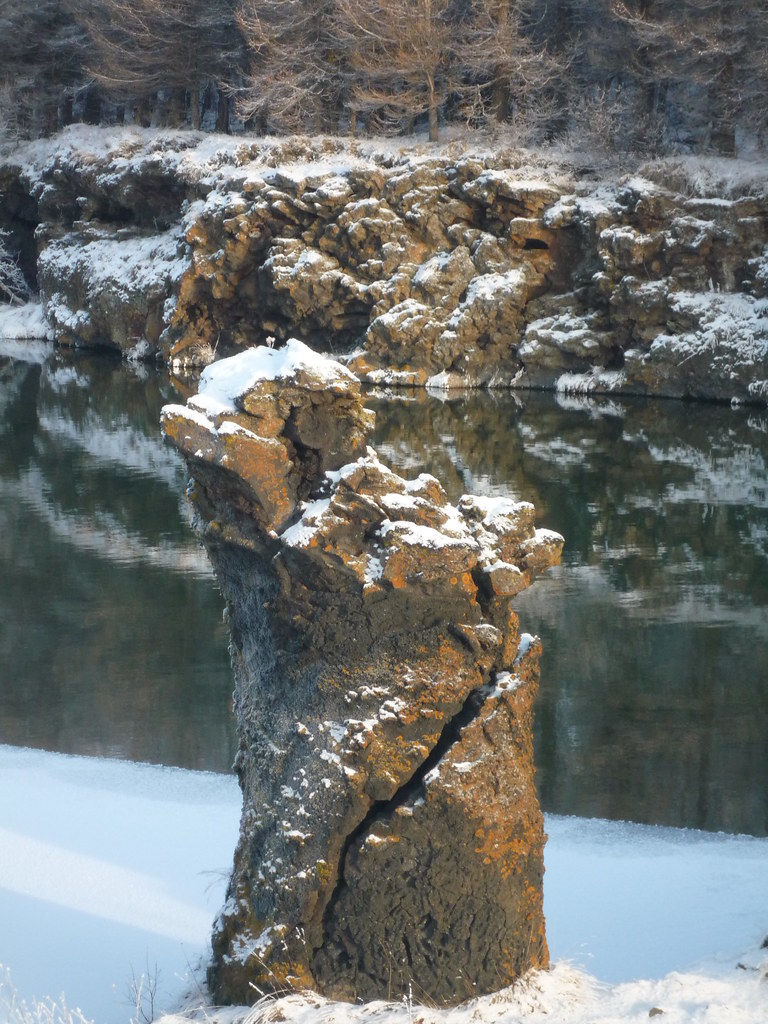
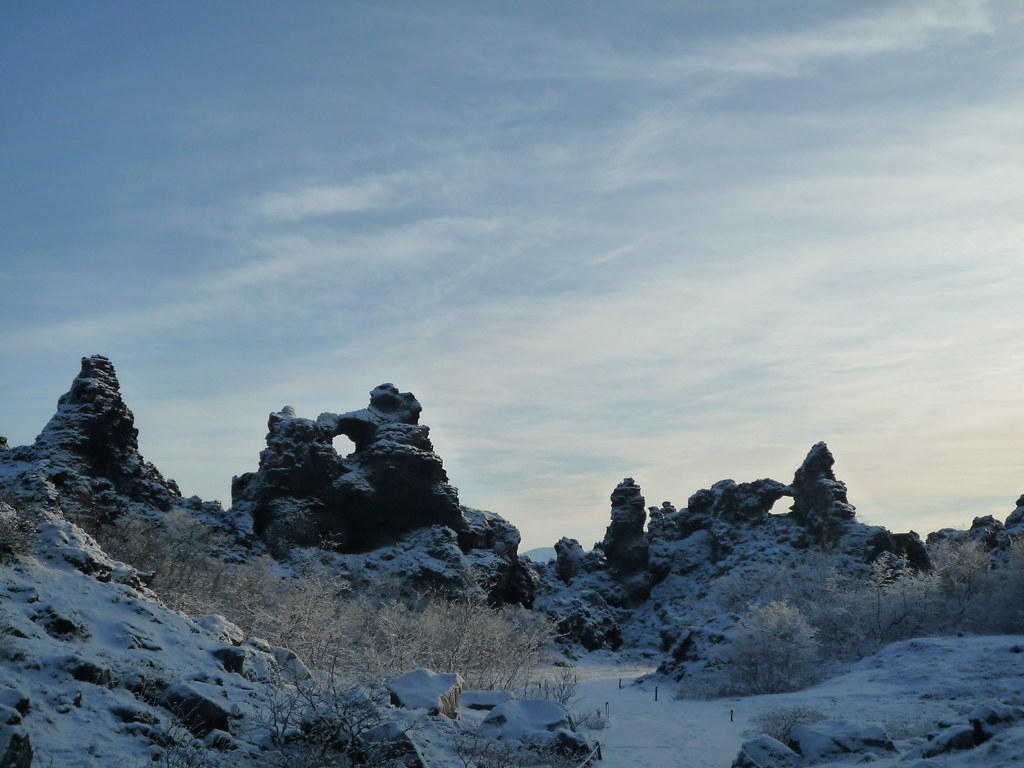
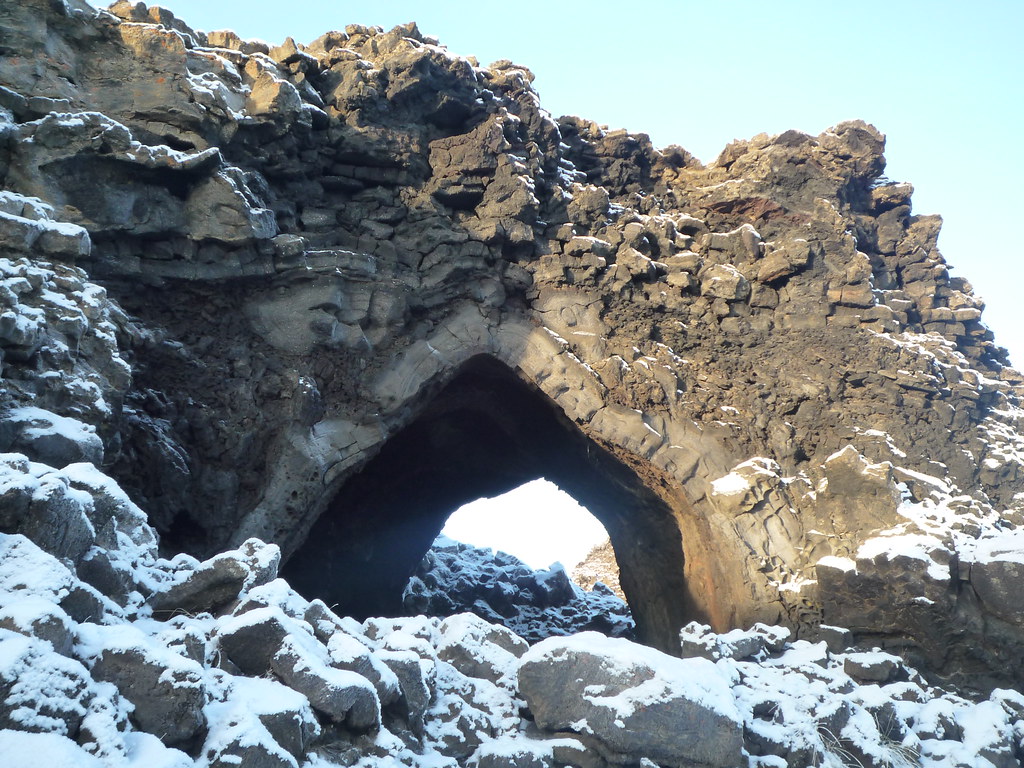
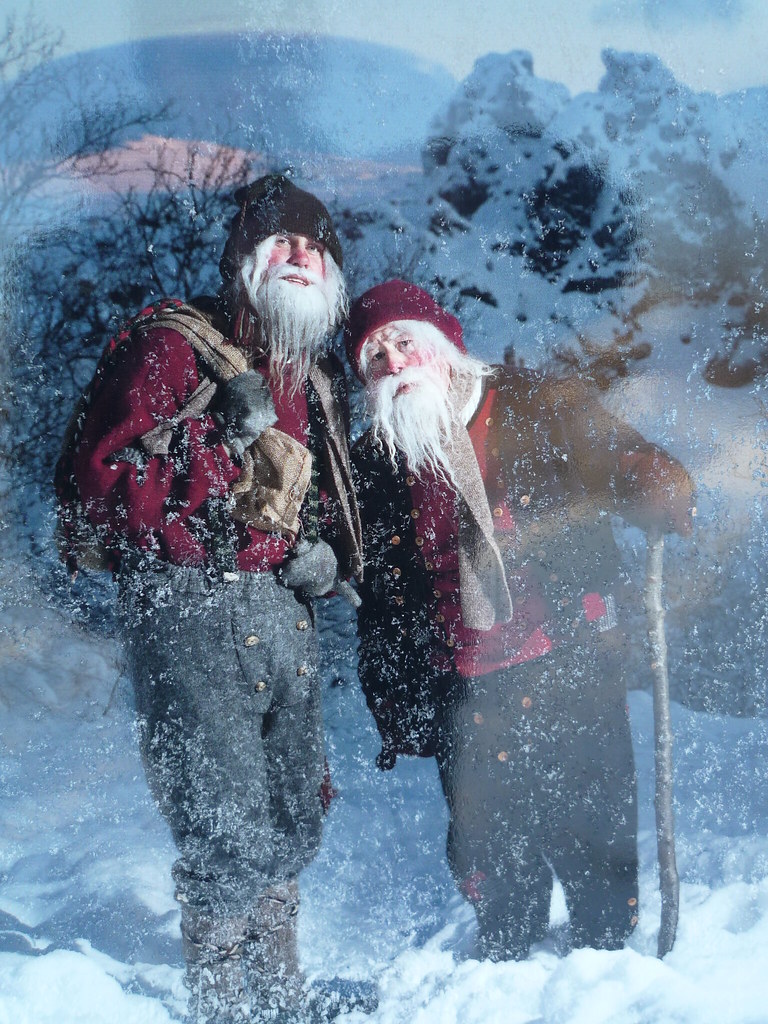
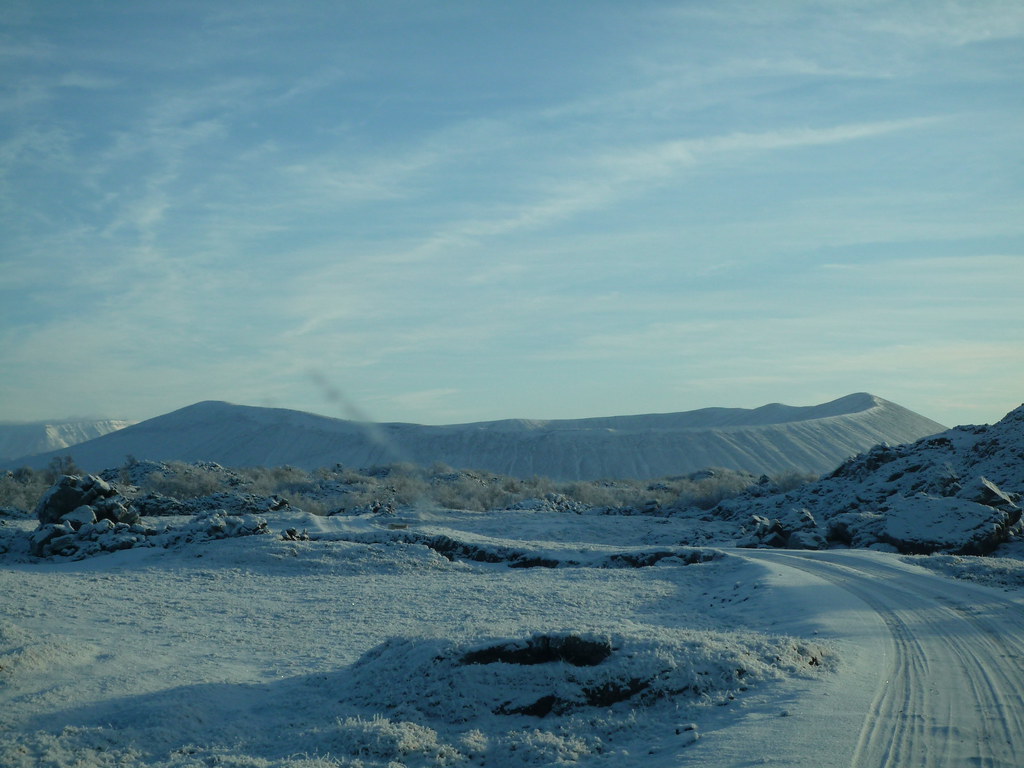
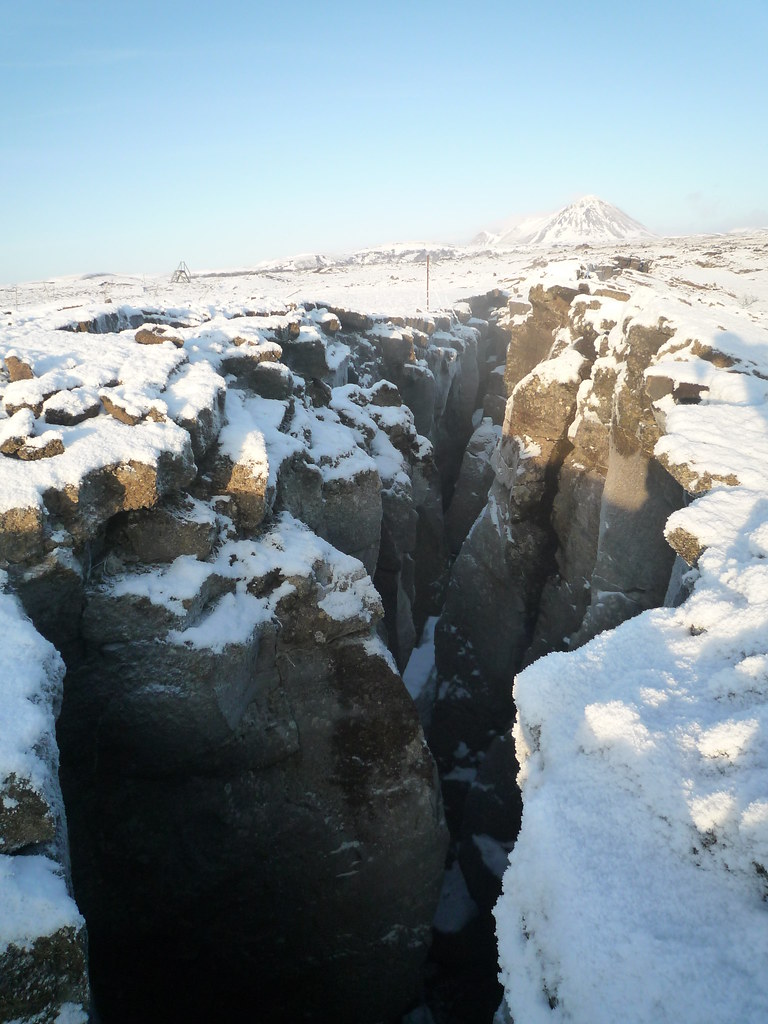
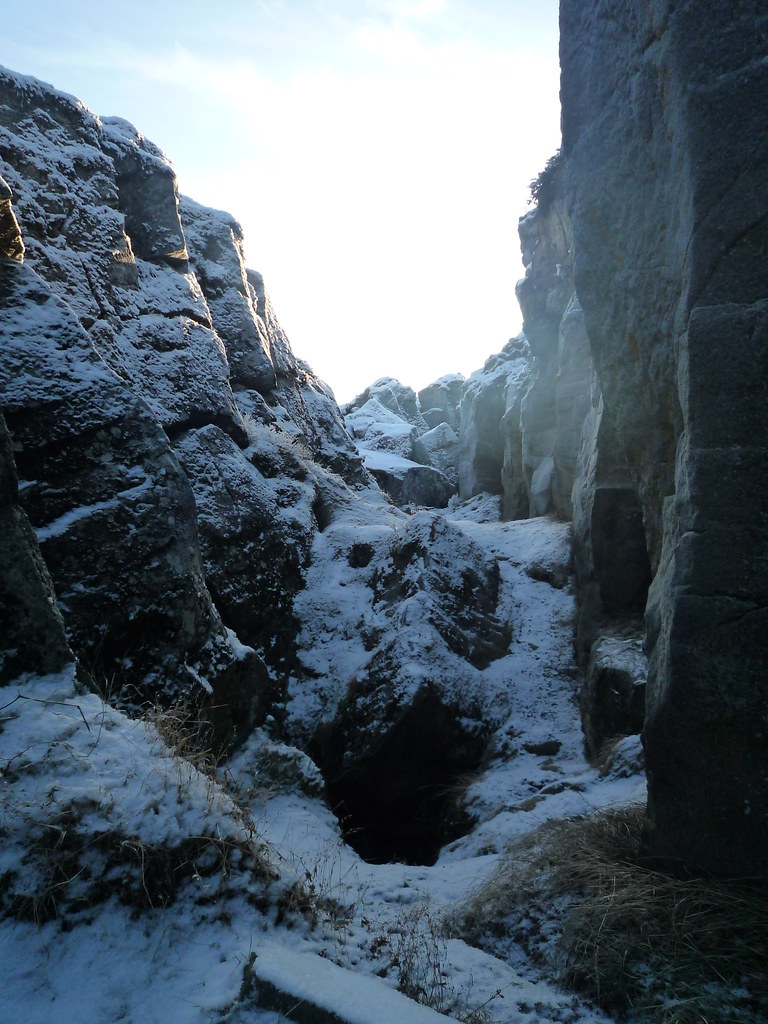
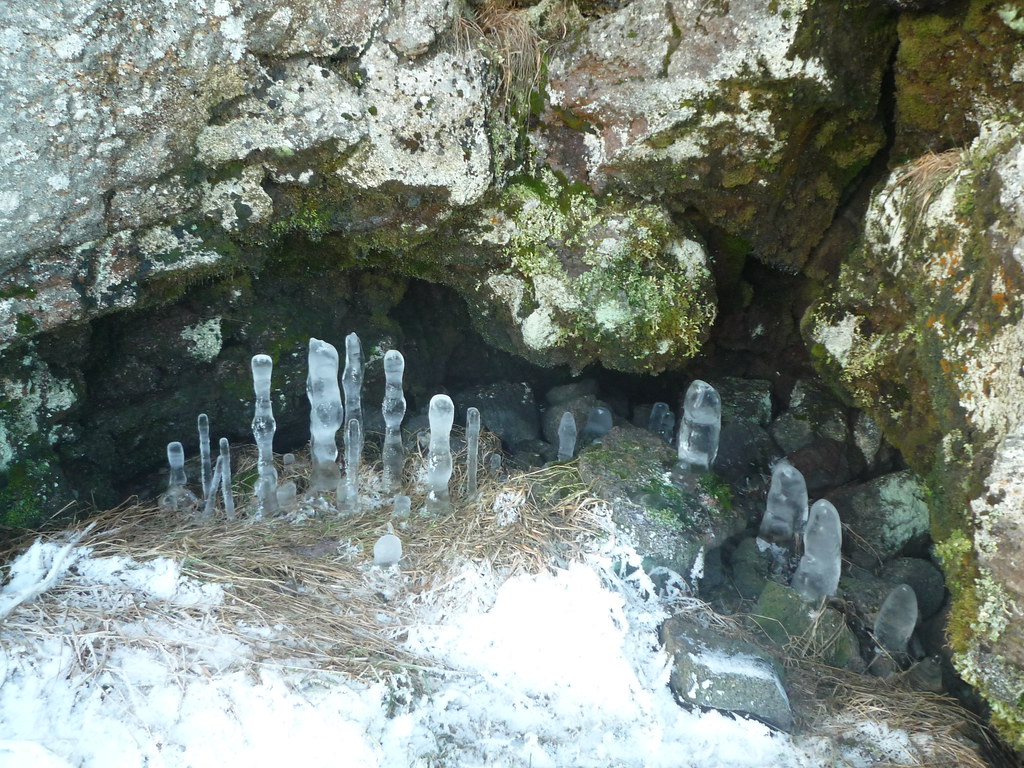
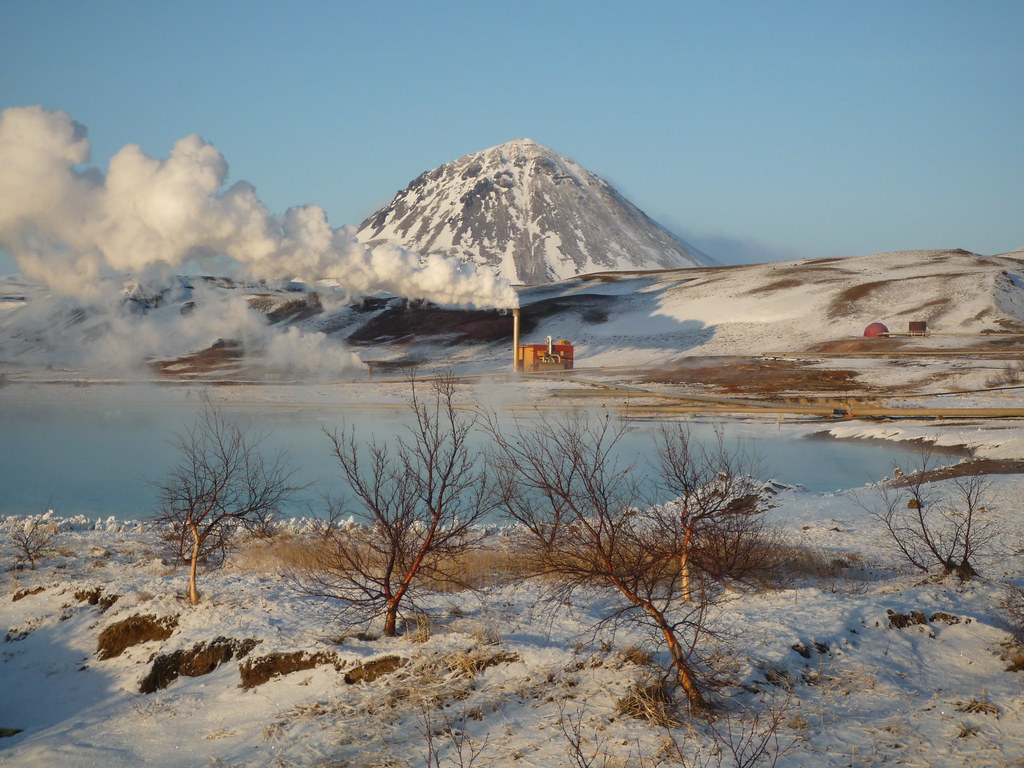


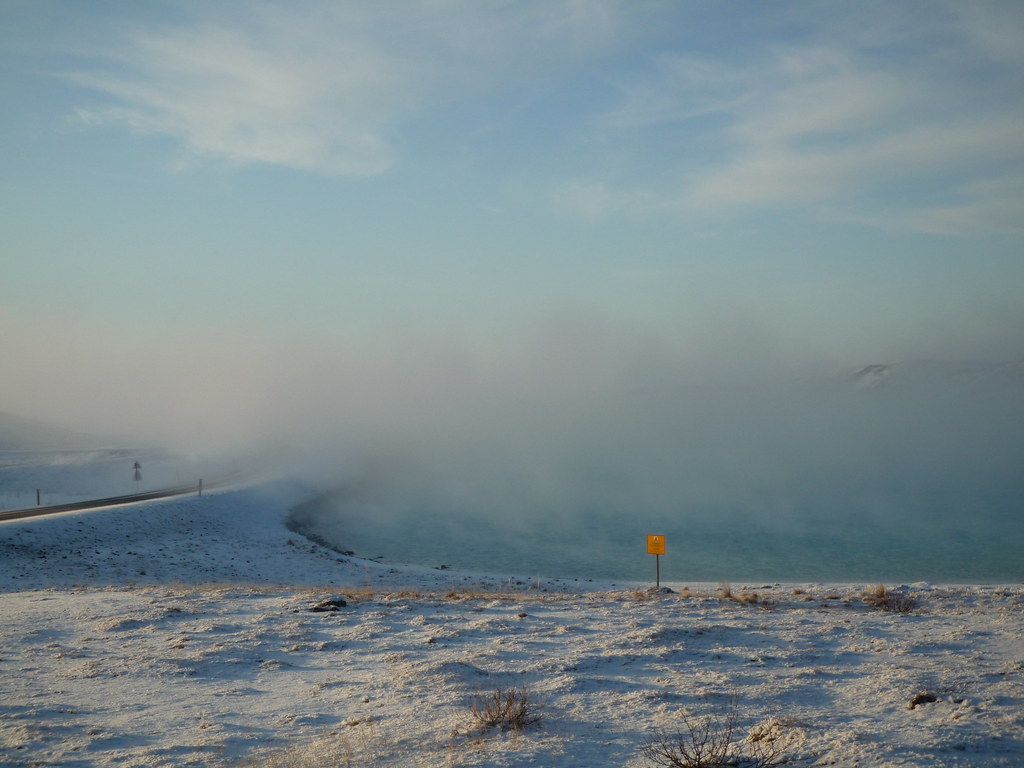
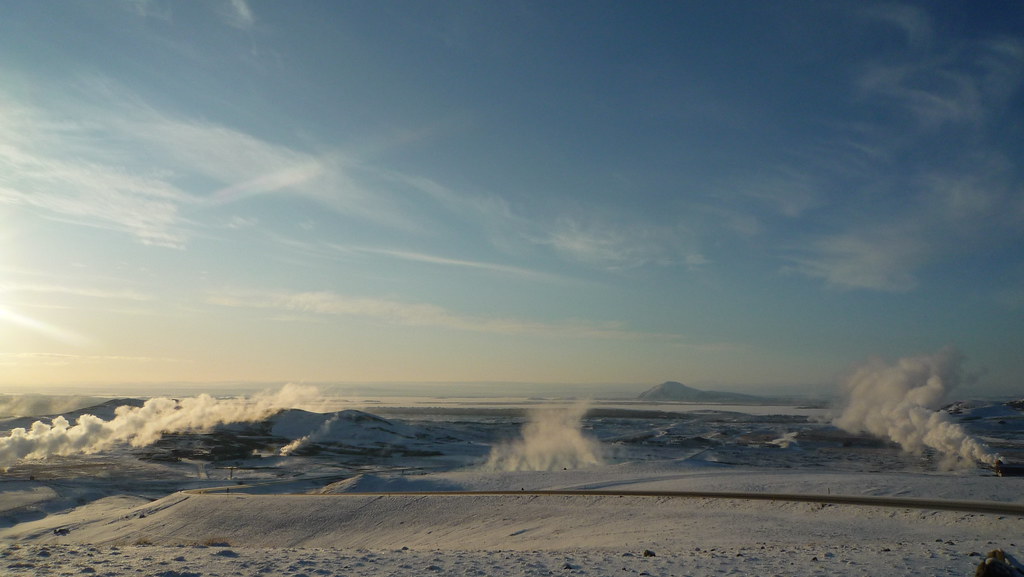
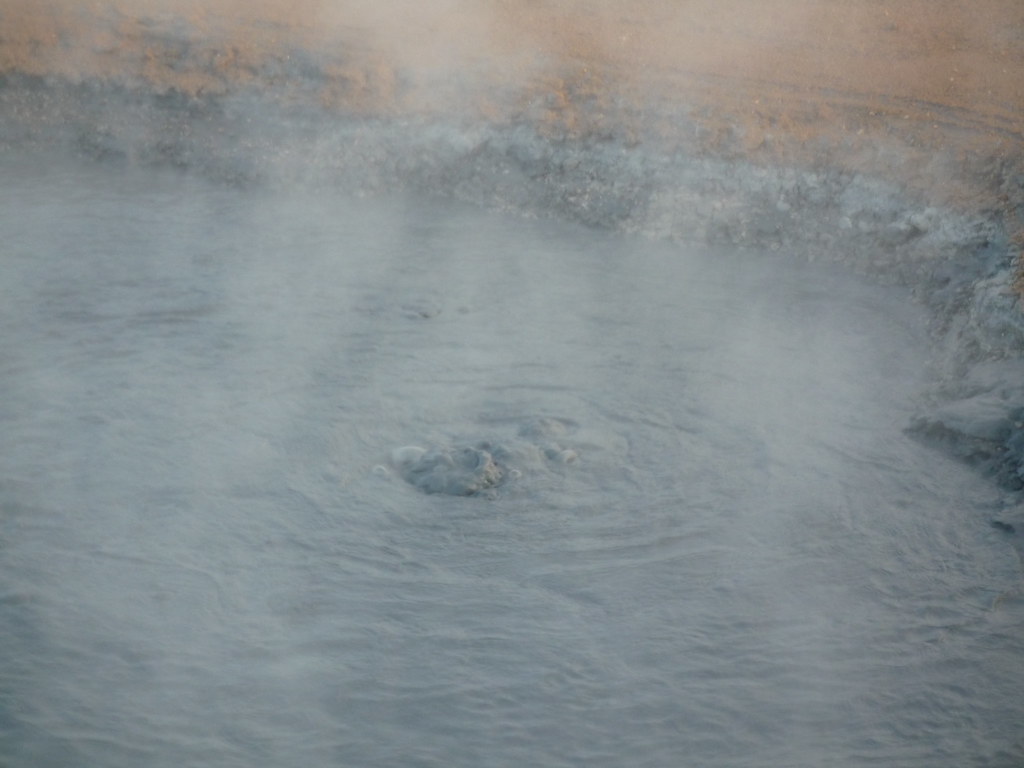
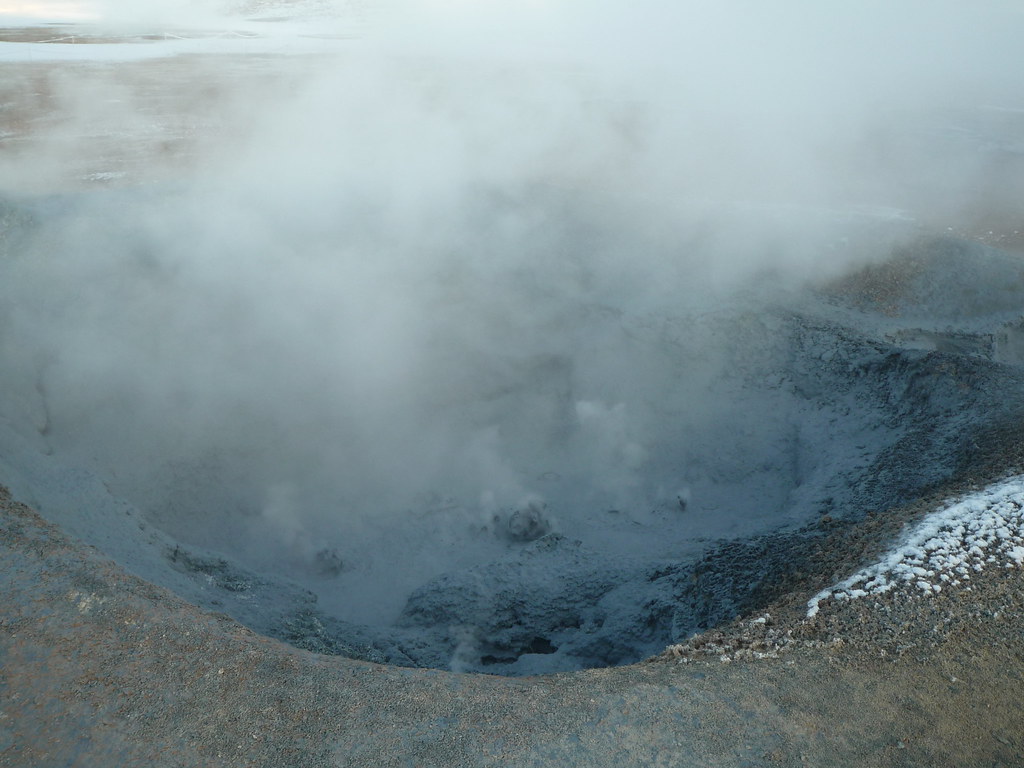
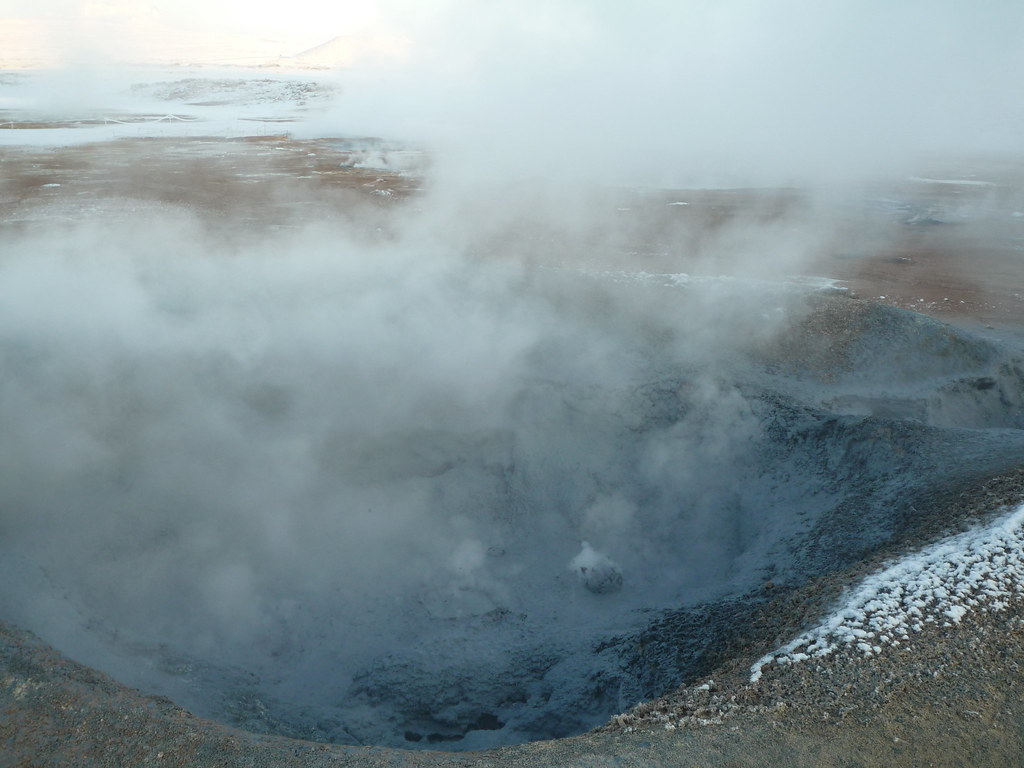
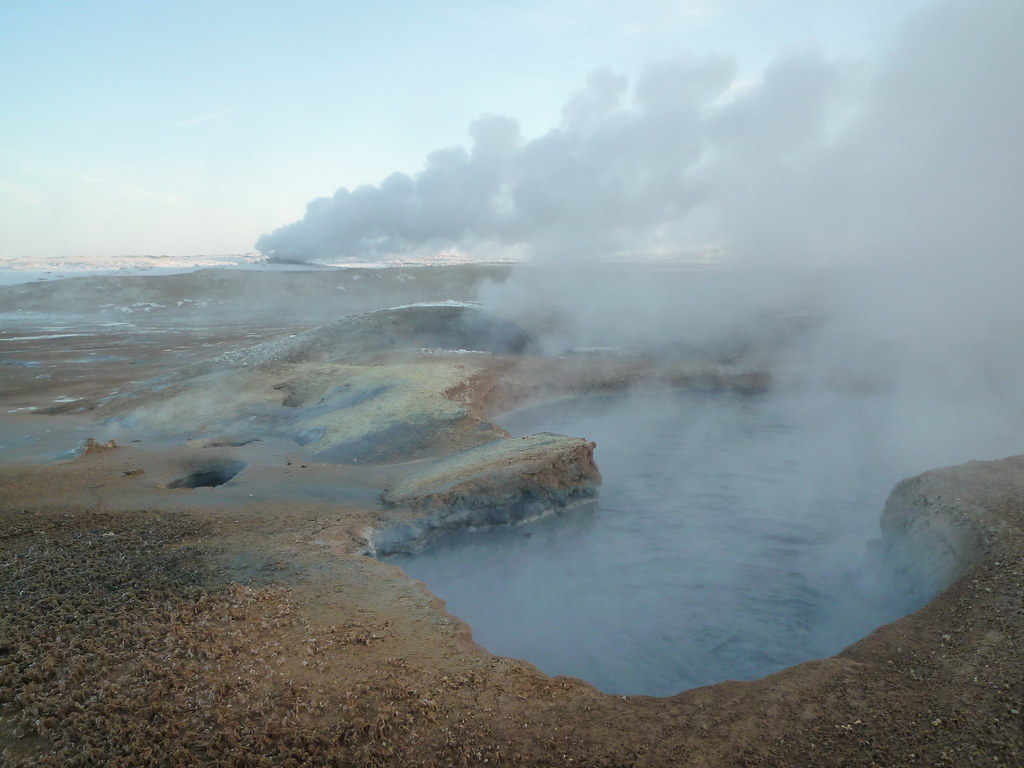

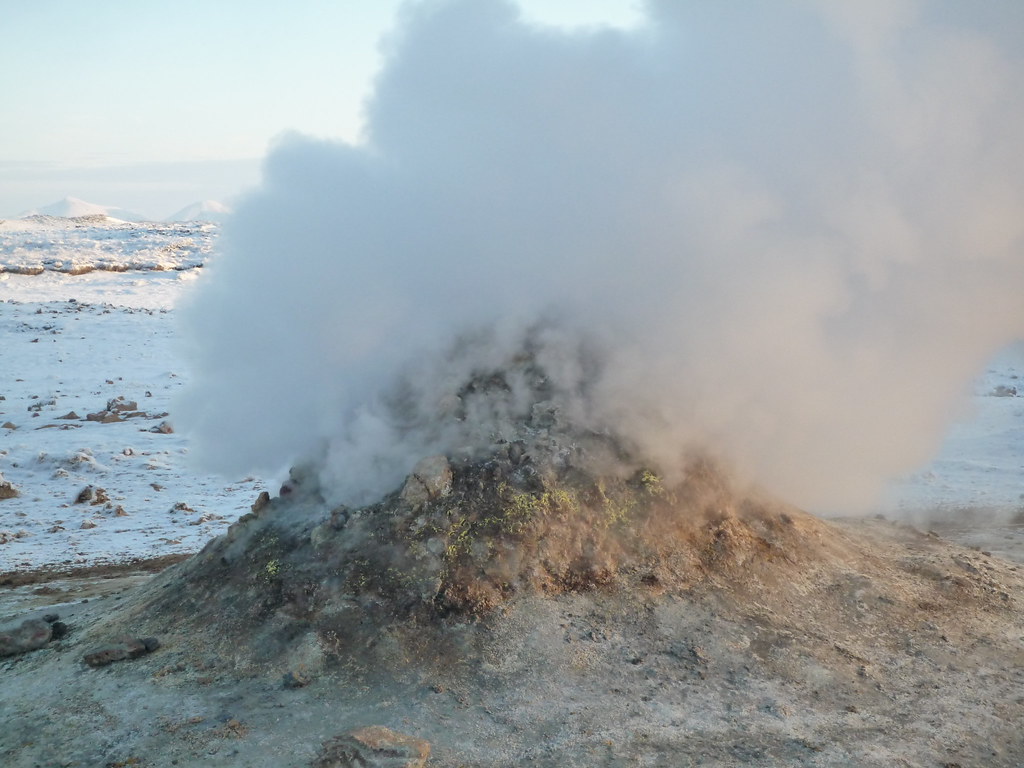

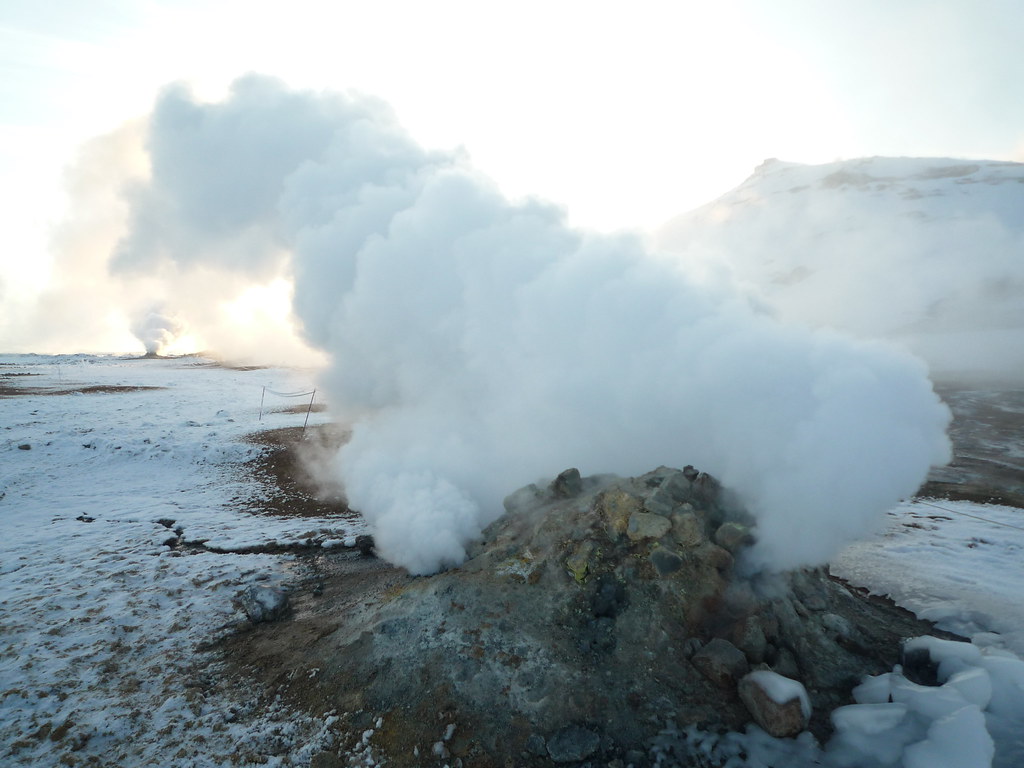
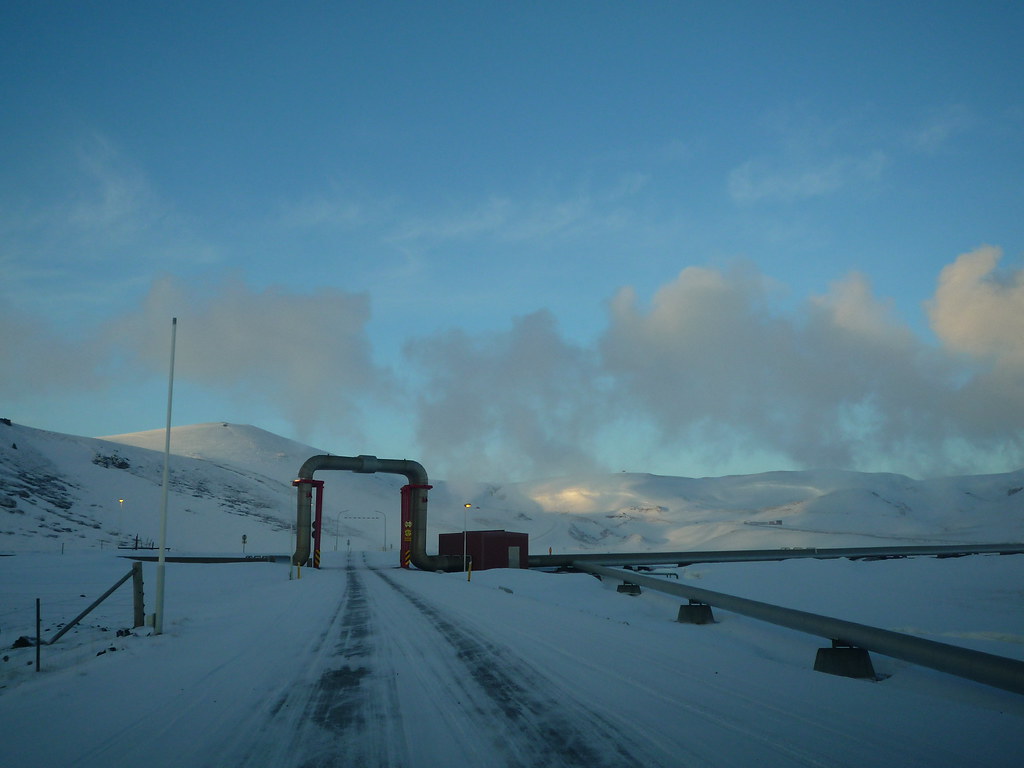
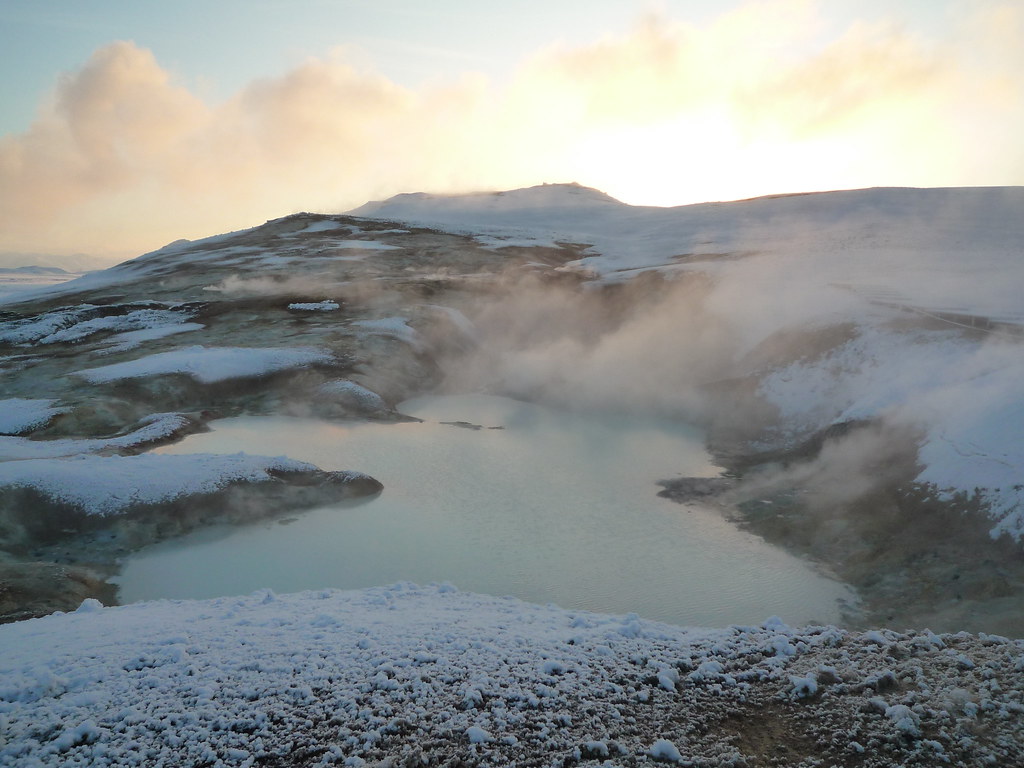
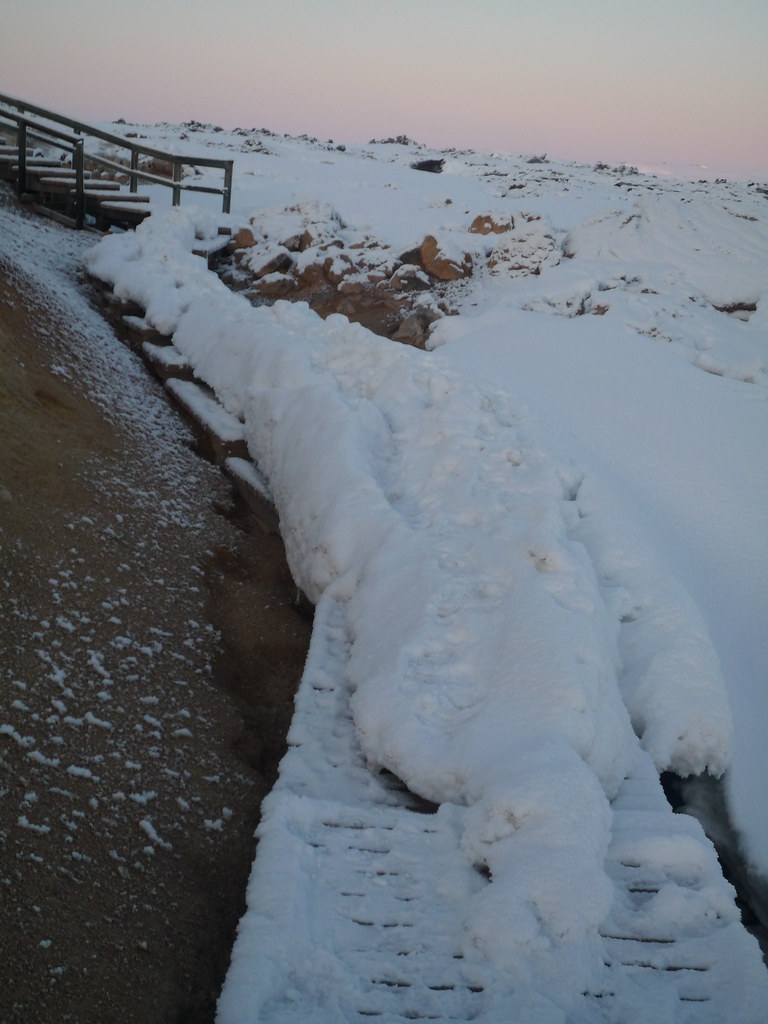
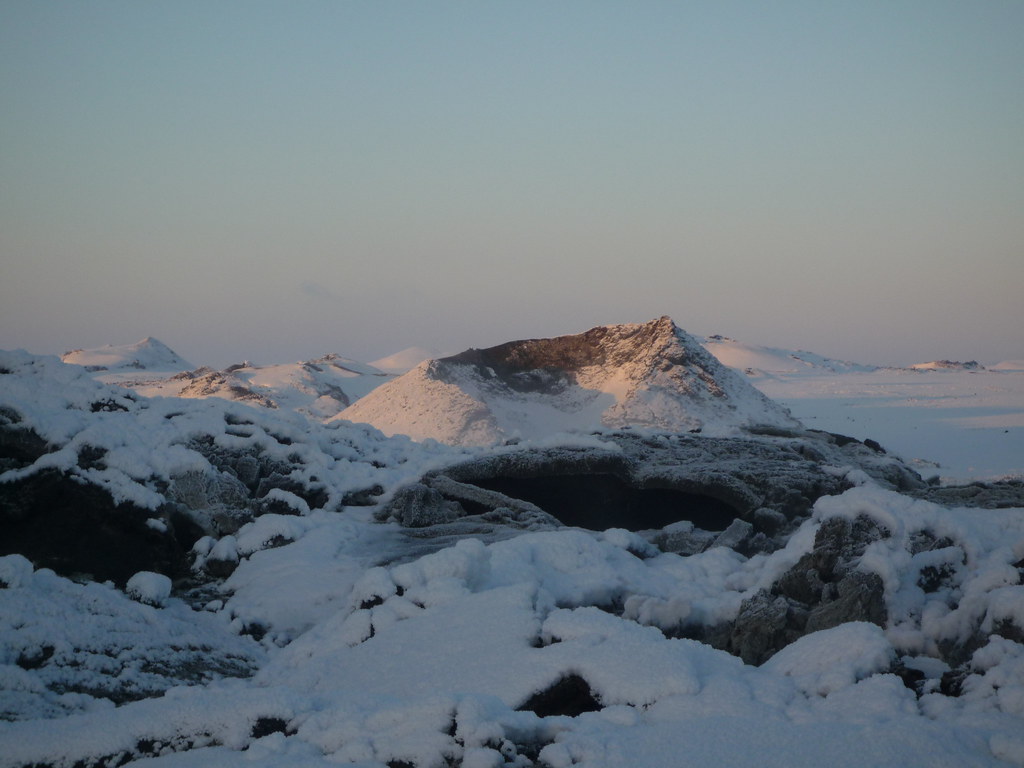
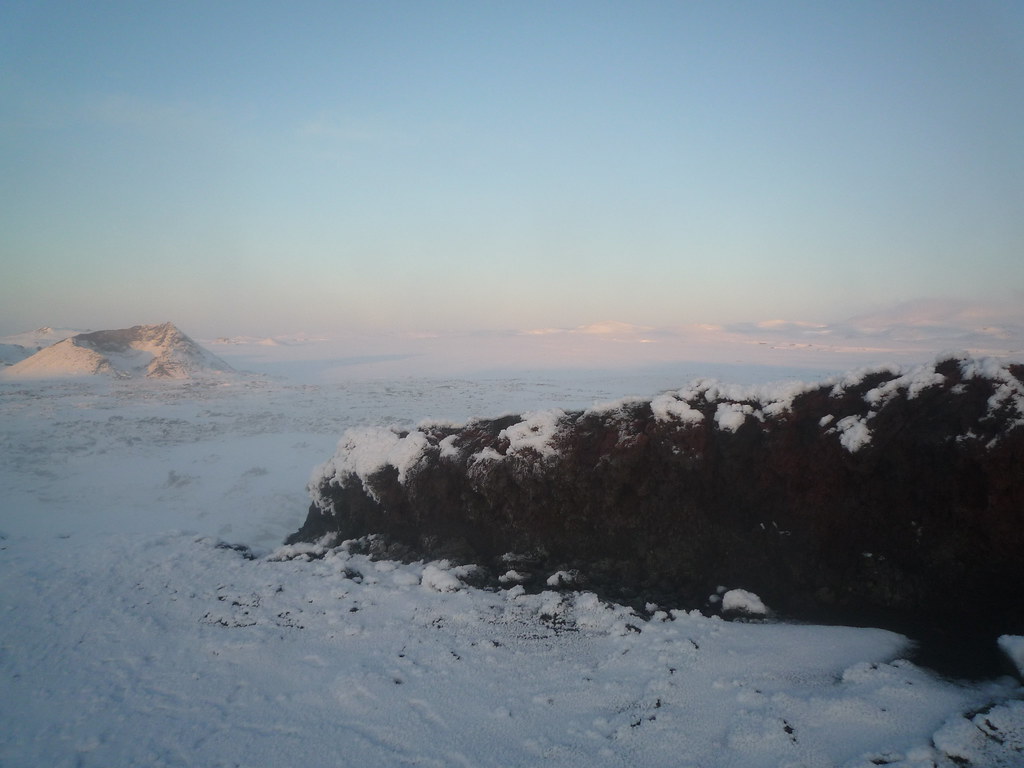
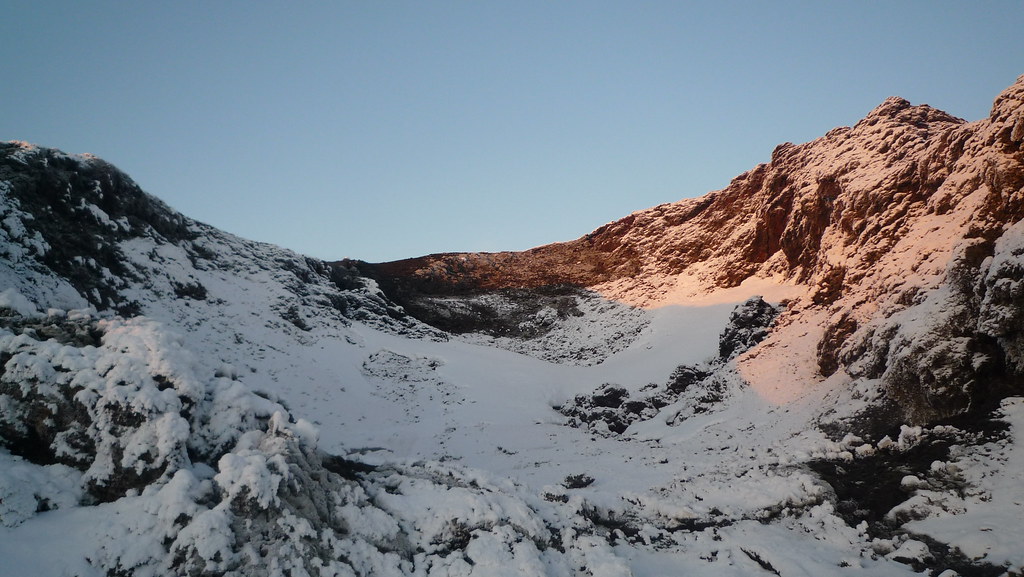

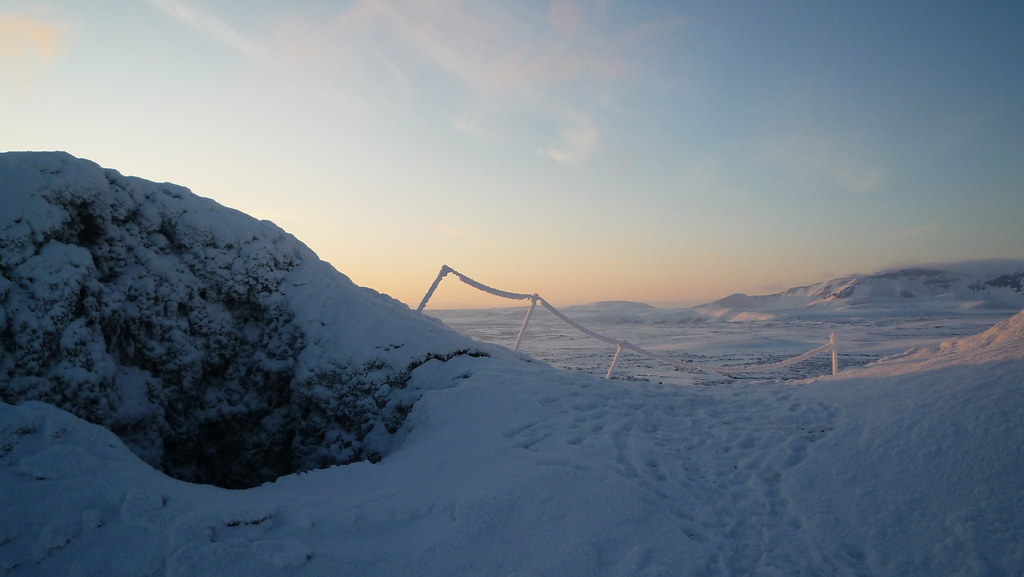
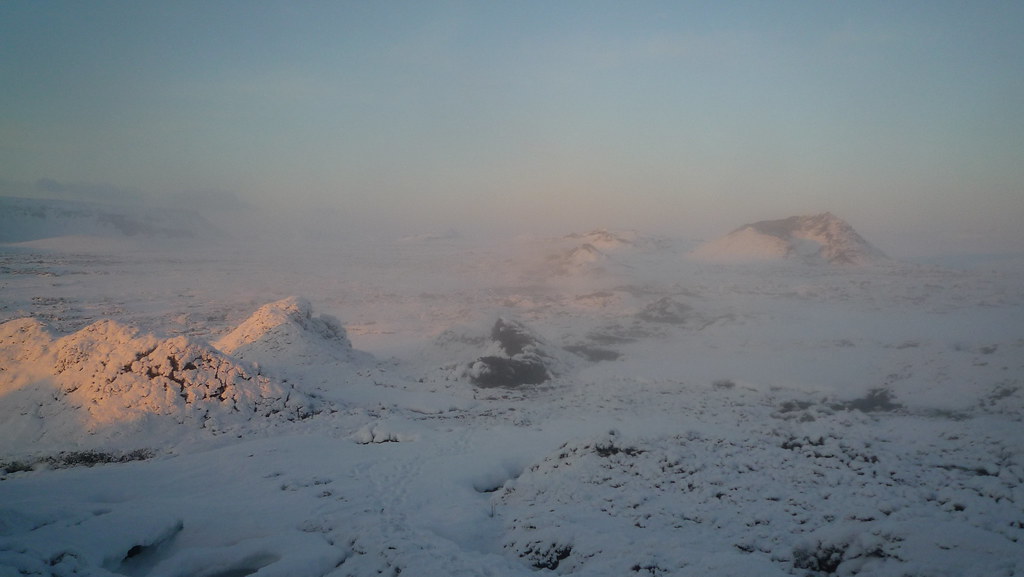

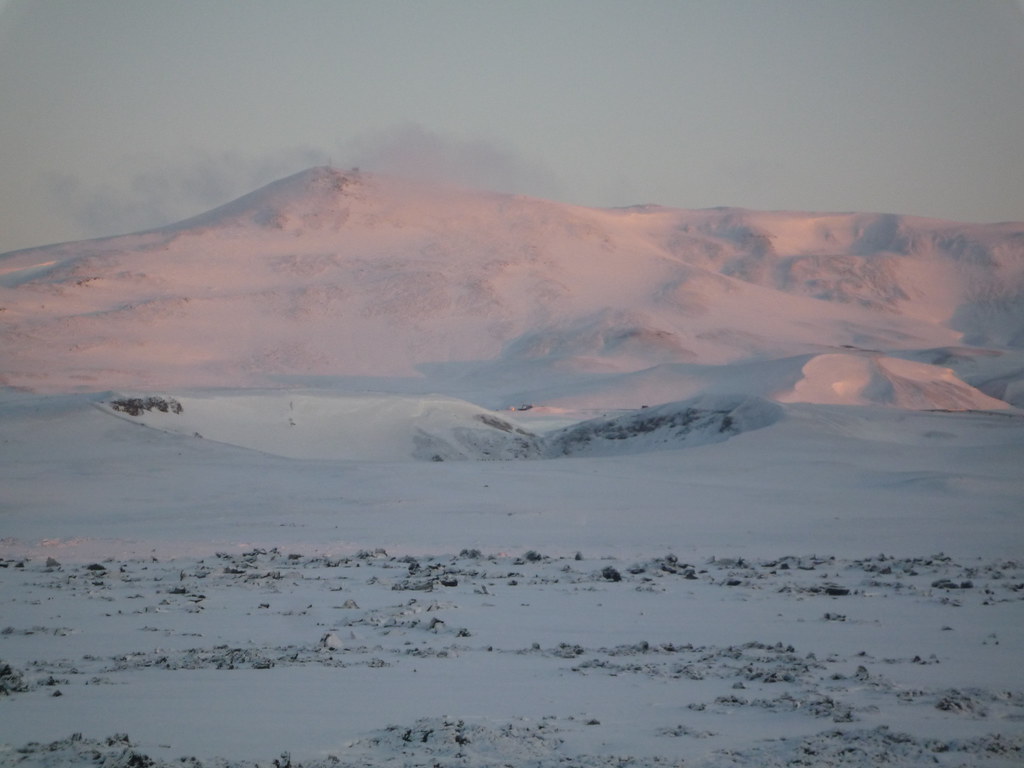
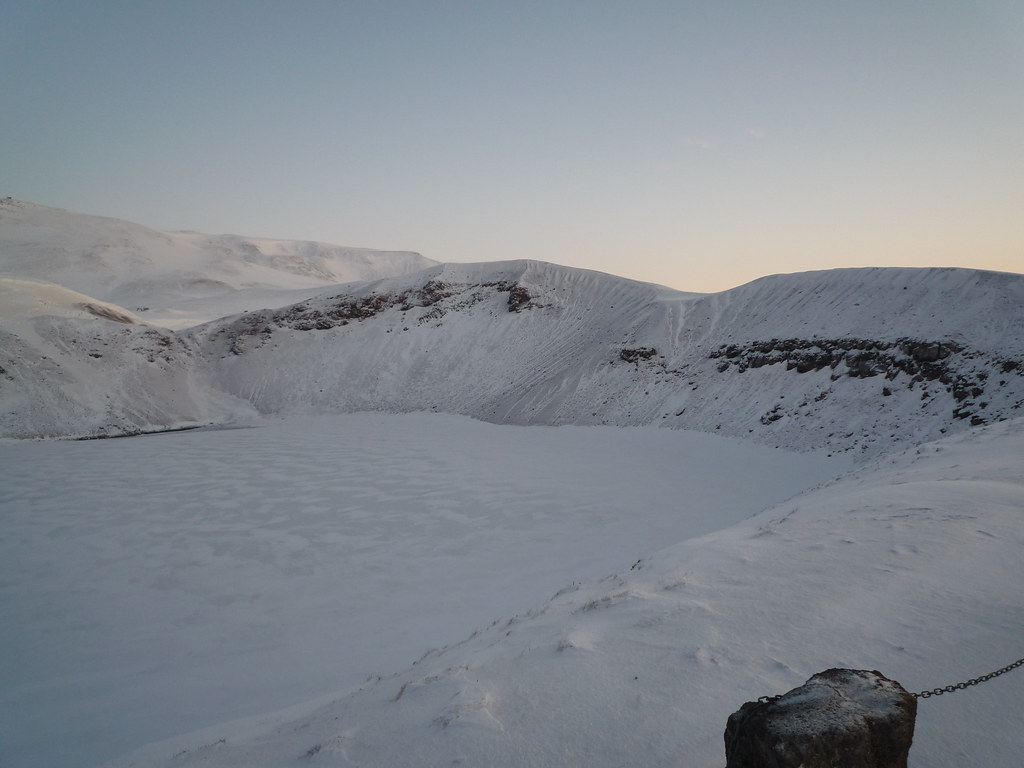
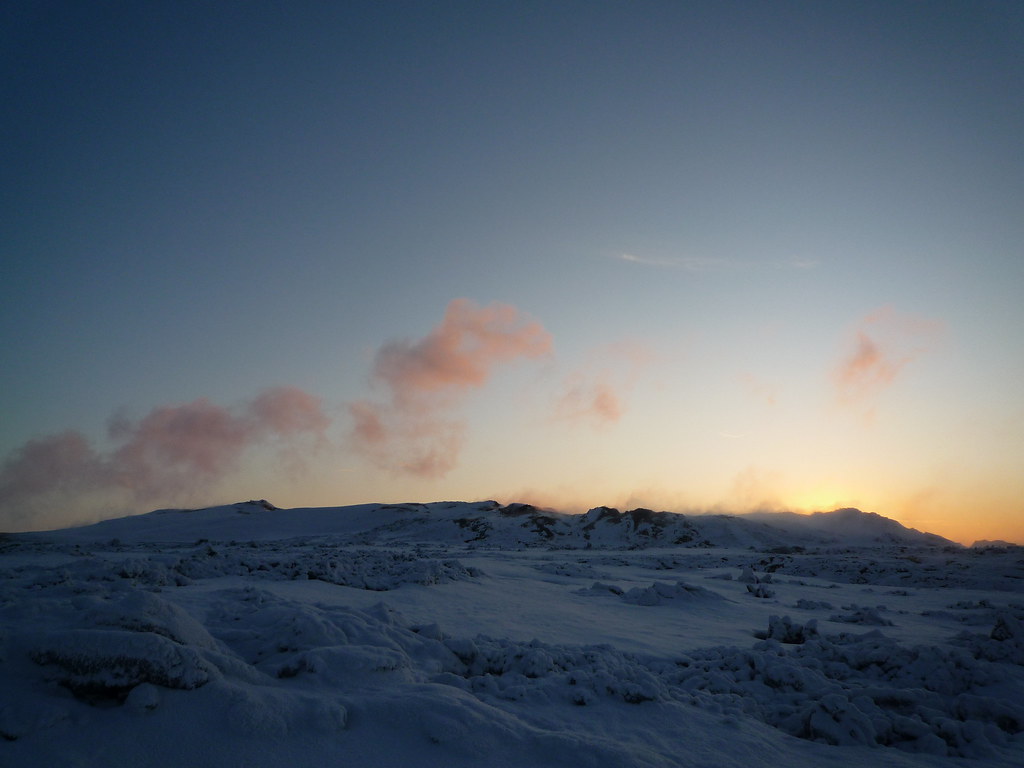
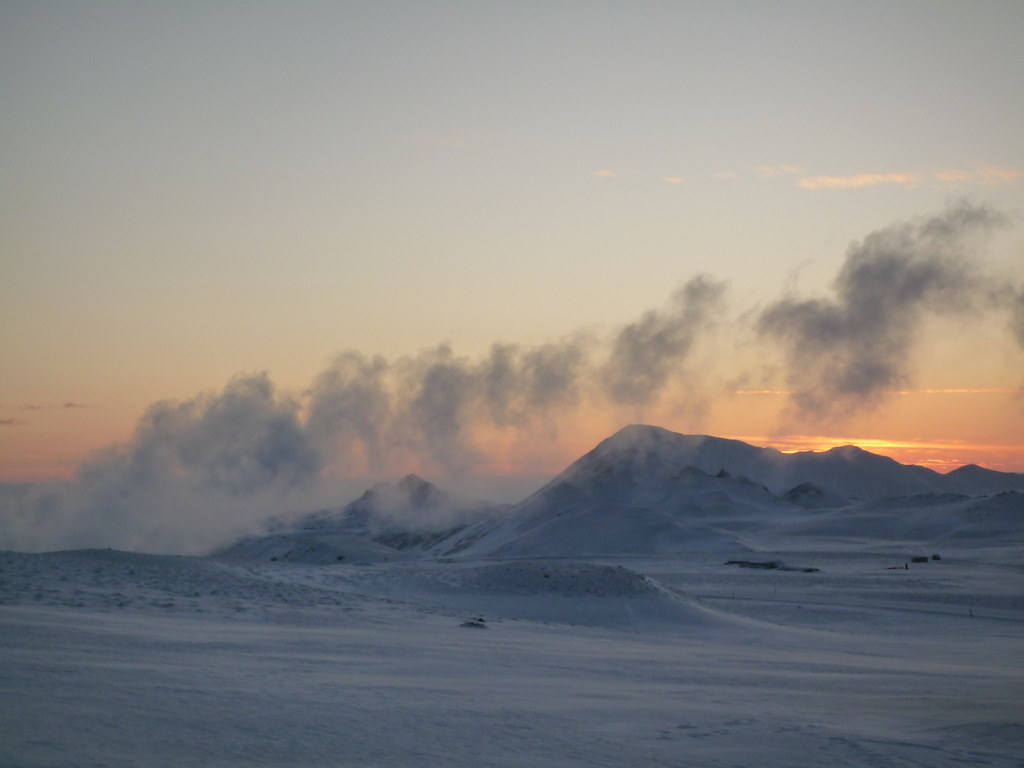
0 comments:
Post a Comment